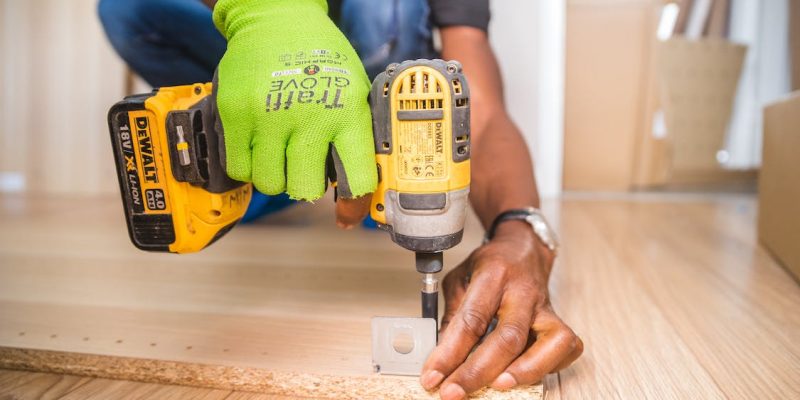Embarking on a Do-It-Yourself (DIY) project can be an empowering adventure, allowing you to flex your creative muscles and gain a sense of accomplishment from creating something with your own hands. However, the success of your endeavor largely depends on the tools you wield. Having the right tools at your disposal not only ensures a smoother and more efficient process but also enhances the quality and durability of your finished project.
This guide is designed to help you navigate the vast array of tools available in the market, understand their specific roles in DIY projects, and select the ones that best suit your needs, budget, and skill level.
Understanding Basic DIY Tools
Before diving into specialized tools, it’s important to familiarize yourself with the basic tools typically used in most DIY projects. These include hammers, screwdrivers, pliers, wrenches, tape measures, and drills. Hammers are used for driving nails, breaking objects, and fitting parts. Screwdrivers are indispensable for inserting and removing screws. Pliers are used for gripping, bending, and cutting while wrenches are used for turning nuts and bolts. Tape measures are essential for accurate measurement, and drills are used for making holes or driving in screws. Owning these basic tools can set a solid foundation for your DIY toolkit.
Specialized Tools for Specific Projects
Apart from the basic tools, there are various specialized tools that cater to specific projects. These include power saws, sanders, routers, and other power tools. Power saws are used for cutting through different materials such as wood, metal or plastic. Sanders are ideal for smoothing rough surfaces and shaping edges. Routers excel in cutting intricate designs and patterns in wood. These power tools offer precision, speed, and efficiency, making them essential for more complex DIY projects. However, they also require caution as they can be dangerous if not handled properly.
Researching Shops Near You
Once you have identified the tools you need, it’s time to start researching where to purchase them. You can find a wide range of DIY tools at hardware stores and home improvement centers, both online and offline. Namely, if you are on the lookout for nearby stores with locations in Texas, you can easily search for it on Google. This will provide you with a list of options to choose from and compare prices, availability, and customer reviews. Additionally, consider visiting local flea markets or garage sales, as they often have great deals on used tools that are still in good condition. When you find a store that has the tools you need, don’t hesitate to ask for advice from the staff on which brands and models are most suitable for your project.
Perhaps you need electric tools because you don’t have much strength in your hands or a tool with an ergonomic grip to avoid injury. Staff members are usually knowledgeable and can help you make the right choice.
Quality Over Price
When purchasing tools, it can be tempting to opt for the cheapest options available. However, keep in mind that quality is a crucial factor when it comes to tools. Investing in high-quality tools for DIY projects may seem more expensive initially, but they will save you time and money in the long run. They are less likely to break or need frequent repairs, and their performance will be superior to cheaper alternatives. Not only that, quality tools often come with warranties and customer support, giving you peace of mind and assurance in your purchase.
Even more so, if you plan on using the tools frequently or for more complex projects, investing in durable and reliable tools is a must. It’s important to strike a balance between your budget and quality when making your purchase decision.
Borrow or Rent Tools

If you are working on a one-time project or have a limited budget, consider borrowing or renting tools instead of purchasing them outright. Ask friends, family members, or neighbors if they have the tools you need and are willing to lend them. Alternatively, many hardware stores offer rental services for various tools at affordable rates. Renting can also be a great way to test out a tool before committing to purchasing it.
On the other hand, if you foresee yourself using the tools frequently for future projects, investing in them may be a better option. However, it’s always worth considering both options before making a decision and weighing the pros and cons based on your specific needs.
Maintaining Your Tools
To ensure the longevity of your tools, proper maintenance should be a top priority. This includes regularly cleaning and oiling your tools, storing them in a dry and secure place, and avoiding excessive wear and tear. Proper maintenance not only extends the lifespan of your tools but also ensures their performance remains at its best. Once you have found the right tools, it’s important to take care of them to continue reaping their benefits for years to come.
Embarking on a DIY project is a journey of creativity, discovery, and achievement. The value of having the right tools cannot be overstated; they can greatly impact both the process and the outcome of your project. By understanding the different types of tools, researching where to buy them, prioritizing quality over price, borrowing or renting when necessary, and diligently caring for your tools, you can pave the way to a successful and satisfying DIY endeavor. Remember, the goal is to create something you’re proud of, and having the right tools in your hands is a significant step toward realizing that goal.




















